Chinese hibiscus 'Petit Orange' Hibiscus rosa-sinensis 'Petit Orange' (Hibisqs Petit Series)

ABOUT
'Petit Orange' is a compact, rounded bushy shrub with broadly lance-shaped, glossy dark-green, evergreen leaves; in summer and autumn small bright orange flowers, with yellow-anthered red stamens and a crimson throat, are borne in profusion from the leaf axils
About this plant
 Names
NamesSynonyms
Chinese Hibiscus, China Rose, Hawaiian Hibiscus, Shoeblack Plant, Tropical Hibiscus.
Common names
Hibiscus rosa-sinensis 'Petit Orange'.
 Characteristics
CharacteristicsLife cycle
Perennials
Foliage type
Evergreen
Color of leaves
Green
Flower color
Orange
Height
2-3 feet (60-90 cm)
Spread
2-3 feet (60-90 cm)
Plant type
Shrub
Hardiness zones
9
Native area
Asia
Benefits
 General Benefits
General Benefits- Ornamental Value: Adds vibrant color and tropical flair to any garden with its showy orange flowers.
- Easy to Grow: Known for being low-maintenance and easy to care for, making it suitable for gardeners of all skill levels.
- Blooms Year-Round: In the right climate, it can produce flowers all year, providing continuous beauty.
- Attracts Pollinators: The blossoms attract butterflies and hummingbirds, promoting biodiversity.
- Compact Size: The 'Petit Orange' variety is smaller than other hibiscus, making it ideal for container gardening or small spaces.
- Drought Tolerance: Once established, it's relatively drought-tolerant, reducing the need for frequent watering.
- Versatility: Suitable for a variety of landscaping uses, including hedges, borders, and as a standalone specimen plant.
- Frost Tolerance: Although tropical, it can tolerate brief periods of cooler temperatures better than many tropical plants.
- Long-lasting Flowers: Individual blooms last longer than typical hibiscus flowers, often extending their display for several days.
 Medical Properties
Medical Properties- Antioxidant: Hibiscus is known for its antioxidant properties, which may help to protect cells from damage caused by free radicals.
- Anti-inflammatory: Compounds in hibiscus can have anti-inflammatory effects, which may help in reducing inflammation-related ailments.
- Antipyretic: Traditionally, hibiscus has been used to reduce fevers, though clinical evidence to support this use is lacking.
- Diuretic: Hibiscus may promote increased urine production, which can be beneficial for renal health and reducing fluid retention.
- Hypotensive: Some studies suggest that hibiscus may help in lowering blood pressure, although it should not replace conventional treatment.
- Antibacterial: Hibiscus contains substances that might be effective against certain bacteria, potentially supporting its use in preventing or treating infections.
- Menstrual Pain: There are claims that hibiscus may help relieve menstrual pain, but these are not well supported by scientific evidence.
 Air-purifying Qualities
Air-purifying QualitiesThis plant is not specifically known for air purifying qualities.
 Other Uses
Other Uses- Hibiscus rosa-sinensis 'Petit Orange', known as Chinese Hibiscus, can be used to polish shoes; rubbing the leaves onto the surface of leather can give a natural shine.
- The petals can be crushed and mixed with henna to enhance the color and quality of hair dye.
- Chinese Hibiscus flowers can be used as a natural acid-base indicator due to their ability to change color depending on the pH of the solution they are placed in.
- The mucilage from the plant can be used as a natural adhesive in delicate art restoration work.
- Its petals can serve as a delicate garnish for exotic dishes or cocktails, offering an impressive flourish.
- When used in paper production, the fibrous parts of the plant can contribute to a more textured and unique paper quality.
- As a natural surfactant, the extract from the Hibiscus petals can be employed in formulating homemade soaps or shampoos.
- Dried hibiscus petals can be infused into oils to create scented aroma oils for use in aromatherapy or as a natural perfume.
- Chinese Hibiscus can be pressed and used in botanical prints for artistic décor or educational purposes.
- The nectar and pollen from the flowers can be used in the hobbyist collection or study of bees, as it is attractive to pollinators.
Interesting Facts
 Feng Shui
Feng ShuiThe Hibiscus is not used in Feng Shui practice.
 Zodiac Sign Compitability
Zodiac Sign CompitabilityThe Hibiscus is not used in astrology practice.
 Plant Symbolism
Plant Symbolism- Femininity: The hibiscus flower, with its delicate and soft petals, is often associated with femininity, and represents beauty and charm.
- Warmth and Hospitality: Its vivid orange color evokes the warmth of the sun and the welcome of a friendly abode, making it a symbol of hospitality.
- Delicate Beauty: Like many flowers, the hibiscus represents delicate beauty, embodying grace and elegance.
- Exoticism: This plant is often linked with tropical places and exotic locales, symbolizing adventure and unusual beauty.
- Carpe Diem: The hibiscus has a short lifespan when it blooms, reminding us to seize the day and appreciate the fleeting nature of beauty and life.
 Water
WaterThe tropical hibiscus, also known as Chinese hibiscus, should be watered frequently, keeping the soil consistently moist but never waterlogged. Aim to water it about once every 3 to 4 days, although this can vary depending on climate and indoor conditions. Generally, during each watering session, you might use about 1 to 2 gallons for a large potted hibiscus, ensuring water penetrates the entire root zone. During hot summer months, the plant may require more frequent watering, possibly every other day. In contrast, during the winter or in cooler temperatures, reduce watering to every 5 to 7 days, adjusting for reduced evaporation and growth rates.
 Light
LightChinese hibiscus thrives in bright, indirect sunlight and should be placed in a location where it can receive a minimum of 4 to 6 hours of sunlight per day. It enjoys morning sun but can suffer from leaf scorch in the harsh afternoon sun, so it’s ideal to situate it where it's protected during peak sunlight hours. East or west-facing windowsills are often good spots indoors, as they provide filtered sunlight without the intensity of midday exposure.
 Temperature
TemperatureChinese hibiscus prefers warm conditions and should be kept in an environment where temperatures range between 60 to 90 degrees Fahrenheit. It can tolerate a minimum temperature of about 50 degrees Fahrenheit but should be protected from sudden temperature drops and cold drafts. Ideally, the hibiscus enjoys daytime temperatures of about 70 to 85 degrees Fahrenheit and slightly cooler temperatures at night.
 Pruning
PruningPruning the Chinese hibiscus encourages bushier growth, removes dead or diseased branches, and can stimulate more abundant flowering. Prune in late winter or early spring before new growth begins, trimming back about a third of the plant's size. It's beneficial to prune the hibiscus at least once a year, but you can also do light pruning throughout the year to shape the plant or remove any unwanted or overgrown branches.
 Cleaning
CleaningAs needed
 Soil
SoilTropical Hibiscus thrive best in a well-draining soil mixture that is rich in organic matter. A good recipe for Hibiscus soil mix includes two parts peat moss, two parts pine bark, and one part perlite or coarse sand to ensure drainage. The ideal pH range for Tropical Hibiscus is slightly acidic, around 6.0 to 6.5.
 Repotting
RepottingTropical Hibiscus plants should be repotted approximately every 1-2 years or when they become root-bound. It's best to repot in the spring or early summer, using fresh soil mix to replenish nutrients and facilitate new growth.
 Humidity & Misting
Humidity & MistingTropical Hibiscus prefer high humidity levels, ideally between 50-60%. To achieve these conditions, especially in dry climates, regularly misting the plant or using a humidifier may be beneficial.
 Suitable locations
Suitable locationsIndoor
Ensure bright, indirect light, keeping moist.
Outdoor
Place in full sun with shelter from strong winds.
Hardiness zone
9-11 USDA
 Life cycle
Life cycleHibiscus begins its life cycle when a seed germinates, typically in warm and moist soil conditions. The sprout emerges as a seedling, which then develops true leaves and begins photosynthesis. As the plant matures, it grows into a bushy shrub, with glossy green leaves and produces its distinct orange flowers. After pollination, these flowers can produce seed pods, which, once mature, disperse seeds to begin a new generation. Throughout its life, the hibiscus will experience periods of active growth and flowering, usually in the warmer months, followed by dormancy or slower growth in cooler periods. With proper care, Hibiscus rosa-sinensis 'Petit Orange' can live for several years, continually producing flowers and seeds.
 Propogation
PropogationPropogation time
Spring-Early Summer
The most popular method of propagating Hibiscus rosa-sinensis 'Petit Orange', often known simply as tropical hibiscus, is through stem cuttings. Ideally, this should be done during the warmer months when the plant is actively growing, such as spring or early summer. A healthy, semi-woody stem of about 4 to 6 inches (approximately 10 to 15 cm) long is chosen, with at least two to three nodes present. Leaves near the bottom of the cutting are removed, and the cut end is often dipped in rooting hormone to encourage root development. The prepared cutting is then inserted into a pot filled with a well-draining potting mix. The cutting should be kept in a warm, humid environment with indirect sunlight, ensuring that the soil remains moist but not waterlogged. Rooting typically occurs over several weeks, after which the new hibiscus plant can be transplanted to a larger pot or into the garden.
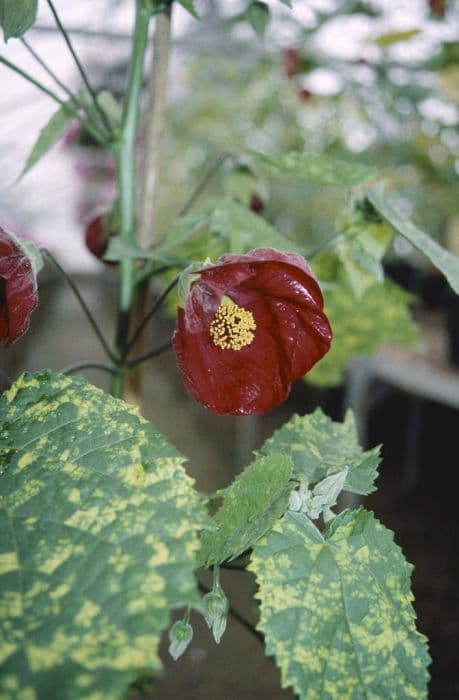
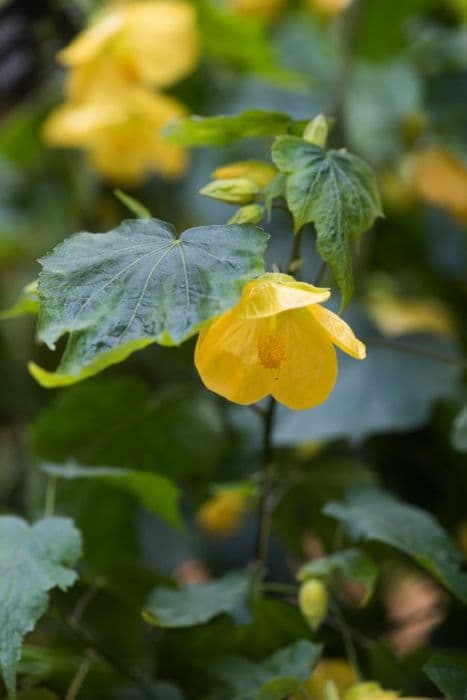
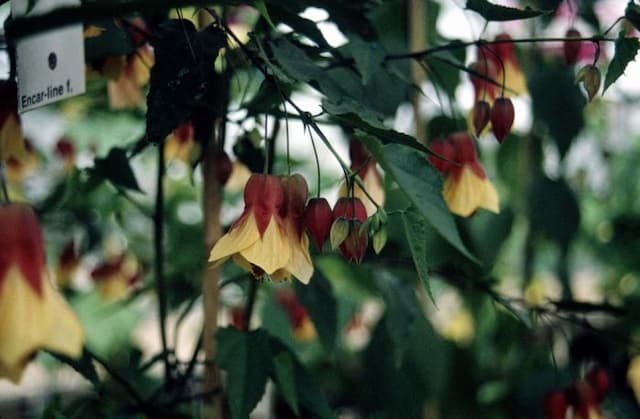
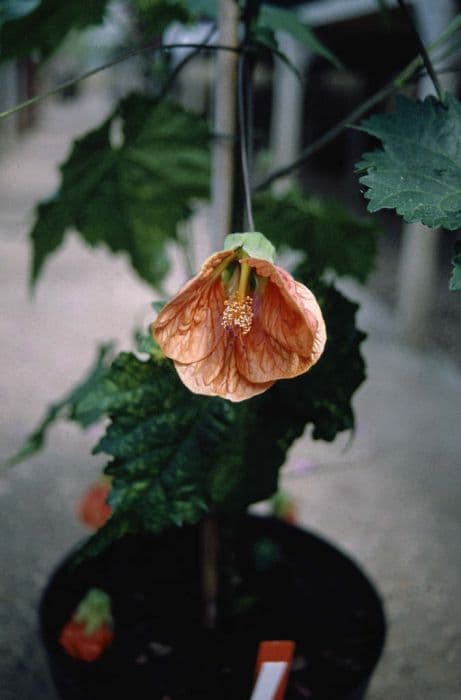
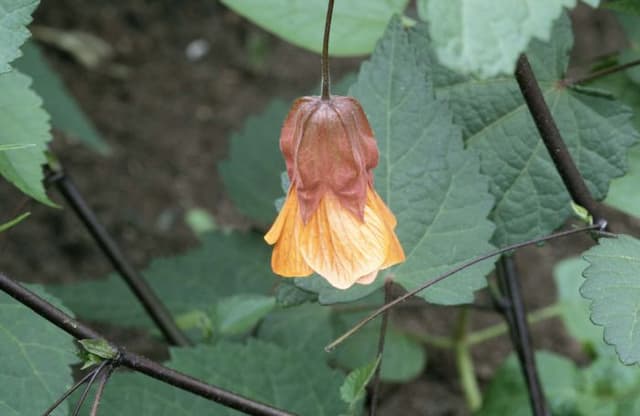

![Abutilon [Yellow Trumpet]](/_next/image?url=https%3A%2F%2Fplants-admin.emdemapps.com%2Fimages%2Fplants%2F%2Fimages%2F604b5caa8b4fb.png&w=640&q=75)

